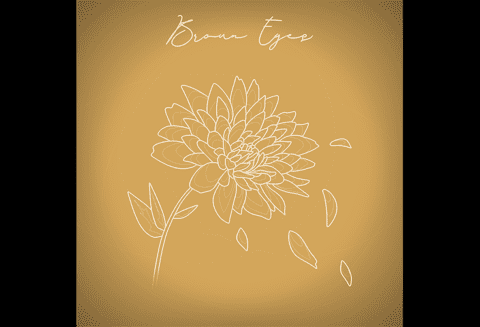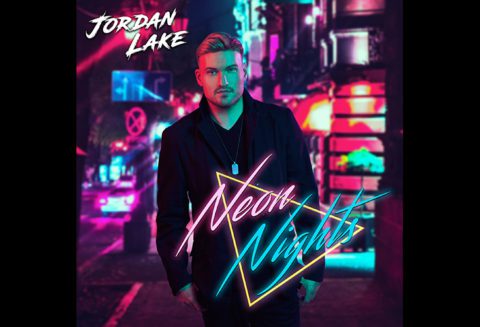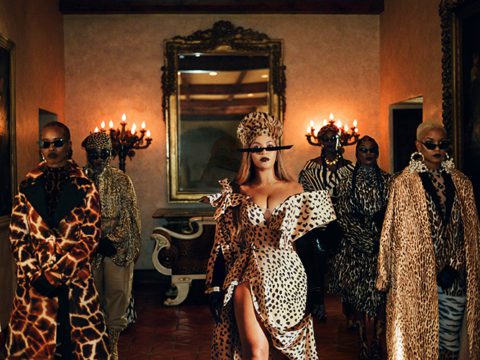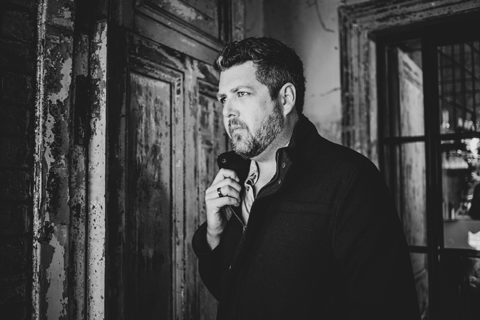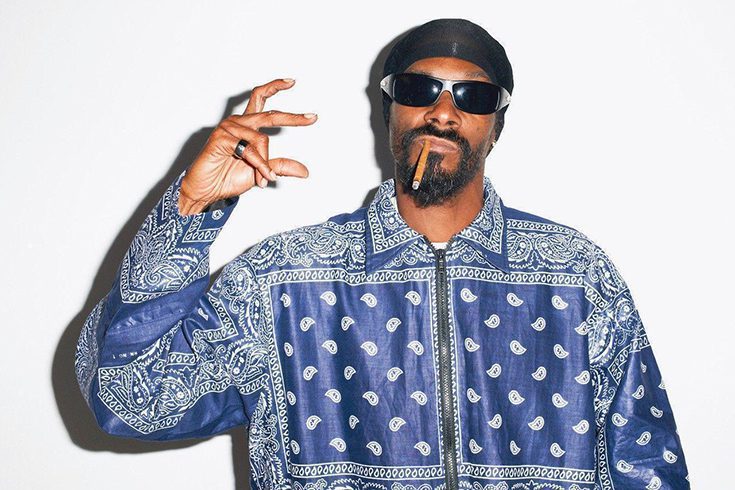
Ever wondered about the intersection of hip-hop and gang culture? In the world of rap, affiliations run deep, and for some rappers, that includes ties to street gangs like the Crips. From coast to coast, these rappers have not only made a name for themselves in the music industry but also maintained connections to the notorious gang. Join us on a journey through the lives and careers of 12 rappers who proudly represent the Crip lifestyle in their lyrics, personas, and communities. Let’s delve into the complex relationship between hip-hop and street gangs, one verse at a time.
Who is a Crip gang member?
A Crip gang member is an individual affiliated with the Crips, one of the most notorious and historically significant street gangs in the United States. Originating in Los Angeles in the late 1960s, the Crips have since expanded to various cities across the country. Members often identify themselves with the color blue and distinctive hand signs, such as the “C” hand gesture.
Who founded the Crips?
The Crips gang was founded in 1969 in Los Angeles, California, by Raymond Washington and Stanley Williams. Initially formed as a neighborhood protection group, the Crips evolved into one of the largest and most notorious street gangs in the United States. Raymond Washington, a teenager at the time, sought to create a sense of community and protection against rival gangs. However, over time, the group became involved in criminal activities, including drug trafficking, robbery, and violence. Despite efforts to reduce gang violence and criminal activity, the Crips have maintained a significant presence in many urban areas, contributing to ongoing challenges in law enforcement and community safety.
Who is the most famous Crip rapper?
The most famous Crip rapper is arguably Snoop Dogg. Born Calvin Cordozar Broadus Jr., Snoop Dogg rose to prominence in the early 1990s as one of the key figures in West Coast hip-hop. His affiliation with the Crips, a notorious street gang, has been well-documented throughout his career. Snoop’s debut album, “Doggystyle,” released in 1993, became an instant classic and solidified his status as a rap icon. Over the years, he has maintained his relevance in the music industry through numerous hit albums, collaborations, and ventures into other areas like acting and entrepreneurship. Snoop Dogg’s influence extends beyond music, making him one of the most recognizable and celebrated figures in pop culture.
What is the Crip walk and why do they do it?
The Crip Walk is a dance associated with the Crips gang, originating in Los Angeles in the 1970s. It involves intricate footwork, often characterized by sliding, spinning, and intricate leg movements. The dance is typically performed to rap or hip-hop music. Originally, it was used as a form of expression and identity within the Crips gang culture, representing pride and solidarity. However, it has since gained popularity beyond gang culture, becoming a mainstream dance form in urban communities. The dance’s origins within the Crips gang contribute to its distinctive style and movements, which reflect the culture and history of the group. Today, the Crip Walk is performed by people from various backgrounds as a form of artistic expression and cultural appreciation.
What is the big difference between a Crip and a Blood?
The primary difference between the Crips and the Bloods, two notorious street gangs in the United States, lies in their origins, colors, and rivalries. The Crips emerged in Los Angeles in the late 1960s, initially as a defense against other neighborhood gangs. They adopted the color blue and are known for their structured organization. Conversely, the Bloods formed as a response to the dominance of the Crips, originating from the Pirus gang in the early 1970s. Bloods identify with the color red and are characterized by a looser organizational structure. Both gangs have engaged in violent conflicts over territory and reputation, leading to ongoing feuds and criminal activities. Despite their differences, both groups are deeply entrenched in urban communities and have a significant impact on local cultures and law enforcement efforts.
Rappers Who Are Affiliated With The Crip Gang
1. Snoop Dogg
Snoop Dogg is a veteran in the game and the very definition of a real OG, synonymous not only with West Coast hip-hop. Snoop also has infamously displayed both the Crip walk and the blue paisley that is so recognizable. His Crip walk dance is shockingly rudimentary and not even close to the authentic display as shown by the legendary WC from Ice-Cube’s Westside Connection project. During his youth that was after graduating from high school, Snoop Dogg was frequently in trouble with drugs and law, in and out of jail for nearly three years. Released from jail he embarked on making homemade rap tapes with his friend Warren G, who was a stepbrother of Dr. Dre of N.W.A. After all, Dr. Dre asked him for collaborations, first on the theme song of the film “Deep Cover,” and then on Dr. Dre’s debut solo album “The Chronic.” Since then his career that has spanned gangsta rap to R&B.
- Real name: Calvin Cordozar Broadus Jr.
- Born: October 20, 1971 (Long Beach, California)
- Crip Gang: Rollin 20’s Long beach Crips
2. Nipsey Hussle
Nipsey Hussle, born Ermias Joseph Asghedom, was an American rapper, entrepreneur, and community activist. He emerged from the West Coast hip-hop scene with his mixtapes and studio albums, gaining acclaim for his lyrical prowess and commitment to uplifting his community in South Los Angeles. Nipsey Hussle was known for his entrepreneurial endeavors, including his Marathon Clothing store, which aimed to provide economic opportunities in his neighborhood. Regarding his gang affiliation, Nipsey was associated with the Rollin 60’s Neighborhood Crips, a prominent street gang in Los Angeles. However, it’s essential to note that Nipsey Hussle’s life and legacy extend far beyond any gang affiliations, as he was widely respected for his music, activism, and dedication to empowering marginalized communities. Tragically, he was fatally shot in 2019, leaving behind a legacy of artistic brilliance and social impact.
- Real name: Ermias Joseph Asghedom
- Born: October 20, 1971 (Long Beach, California)
- Death: 31 March 2019 (Los Angeles, California)
- Crip Gang: Rollin 60’s Neighborhood Crips
3. Pop Smoke
Pop Smoke started getting popularity from his April 2019 single “Welcome To The Party,” which was boosted by support from A$AP Ferg. Smoke also used a signature and distinguishable drill-style rap in his music, the style that is typically seen in the UK rap scene. However, Pop Smoke joins young talented rappers such as Mac Miller, Lil Peep, the problematic XXXTentacion, Nipsey Hussle and Juice WRLD whose lives were cut short in the prime of their careers. Early in the morning on February 19, 2020 the Brooklyn rapper was shot and killed at the home he was renting in the Hollywood Hills. After his death, the New York Post stated that the NYPD appeared to be using pending charges to try to get Pop to roll over Crip gang members. A source tells the Post that police first tried to get Pop Smoke to snitch when he was arrested in December 2019 for allegedly possessing a stolen Rolls Royce Wraith. Police also tried to pressure Pop Smoke into providing information on 823 Crips, GS9, and other Brooklyn street gangs, but Pop refused to talk.
- Real name: Bashar Barakah Jackson
- Born: July 20, 1999 (Canarsie, Brooklyn, New York)
- Died: February 19, 2020 (Los Angeles, California)
- Crip Gang: 823 G-Stone Crips
4. Roddy Ricch
Roddy Ricch was a member of the Park Village Compton Crips, and has two “C”s tattooed, symbolizing his previous affiliation with the gang. He also had a brief stint in county jail at the time when his second commercial mixtape, Feed Tha Streets II, was released. Influenced by artists such as Meek Mill, Future, Speaker Knockerz, and Young Thug (as well as the stylings of Atlanta trap and Chicago drill), Ricch began recording in his bedroom at the age of 16, honoring his family’s Louisiana roots while chronicling Los Angeles street life. His debut effort, Feed tha Streets, arrived in late 2017. The following year would see Ricch’s big breakthrough, starting with the release of his Be 4 tha Fame EP. That summer, he issued the single “Die Young,” produced by London on da Track. In December 2019, he released his debut album, Please Excuse Me for Being Antisocial, debuting and peaking at number one and spawned the hit song “The Box”. Ricch has also won several accolades, including a Grammy Award from different nominations.
- Real name: Rodrick Wayne Moore Jr.
- Born: October 22, 1998 (Compton, California)
- Crip Gang: Park Village Compton Crips
5. Coolio
Coolio was a West Coast rap artist whose poignant and touching lyrics expressed ideas about family, respect, love, AIDS and revolution. He got his start in the South Central Los Angeles rap scene during the early 1980s. The rapper achieved mainstream success in the mid-1990s with his albums It Takes a Thief, Gangsta’s Paradise and My Soul. He is best known for his Grammy Award-winning single “Gangsta’s Paradise”, which appeared on his album of the same name and the soundtrack of the movie Dangerous Minds.
- Real name: Artis Leon Ivey Jr.
- Born: August 1, 1963 (Monessen, Pennsylvania)
- Died: September 28, 2022 (Los Angeles, California)
- Crip Gang: Poccet Hood Compton Crips
6. Sleepy Hallow
Sleepy Hallow is a member of the street gang; the Eight Tray Gangsta Crips, a gang he joined when he was released from Juvenile. His best friend and frequent collaborator, Sheff G, is also a member of the same set, and, likely, it was here where they met one another. He started gaining recognition when he collaborated with Sheff G on his first hit, “Flows,” in 2018. He’s known for his involvement in the Brooklyn drill scene, his use of guitar and sounds from across the hip-hop and trap spectrum, and his signature flow. collaborated with Sheff G. on his first hit, “Flows,” in 2018. He’s known for his involvement in the Brooklyn drill scene, his use of guitar and sounds from across the hip-hop and trap spectrum, and his signature flow.
- Real name: Teagan Joshua Anthony Chambers
- Born: December 20, 1999 (Jamaica)
- Crip Gang: 83 Gangsta Crips
7. Fivio Foreign
Fivio Foreign started rapping under the name Lite Fivio in 2011. In 2013, he changed his name to Fivio Foreign and formed a music collective with his friends under the name 800 Foreign Side. 2019 was a breakthrough year for him as his debut EP Pain and Love was released under the record label Foreignside Records. He also signed a million-dollar deal with Columbia Records in October 2019. In the same year, he released his single “Big Drip” which received a remix with ATL rappers Lil Baby and Quavo. The release of “Big Drip” skyrocketed his music career as a rapper. The song received more than five million hits on SoundCloud and became his most successful single.
- Real name: Maxie Lee Ryles III
- Born: March 29, 1990 (New York City)
8. Schoolboy Q
Schoolboy Q released his first mixtape titled, ScHoolboy Turned Hustla and followed up in 2009 with Gangsta & Soul. After signing with Interscope, he subsequently began recording his major-label debut studio album, titled Oxymoron (2014). The album debuted at number one on the US Billboard 200 and was preceded by the singles “Collard Greens” (featuring Kendrick Lamar), “Man of the Year”, “Studio” (featuring BJ the Chicago Kid) and “Hell of a Night”. The first three singles all charted on the US Billboard Hot 100 chart, with “Studio” remaining his best-performing as a lead artist to date. ScHoolboy Q has also been open about his gangbanging past as a member of the Crips.
- Real name: Quincy Matthew Hanley
- Born: October 26, 1986 (Wiesbaden, West Germany)
- Crip Gang: 52 Hoover Crips
9. Sheff G
Sheff G is a member of the street gang; the Eight Tray Gangsta Crips. His best friend and frequent collaborator, Sleepy Hallow, is also a member of the same set, and, likely, it was here where they met one another. Sheff G is known for his standout lyrical capabilities compared to the rest of the drill scene, mixing storytelling in with the genre’s signature hardcore style. He was influenced and inspired to rap by listening to 50 Cent, Notorious B.I.G. and Chicago drill rappers like Lil Bibby and Chief Keef. In 2017, his single “No Suburban” produced by AXL Beats went viral and he was credited as one of the pioneers of the Brooklyn drill music movement.
- Real name: Michael Kyle Williams
- Born: September 23, 1998 (Brooklyn, New York)
- Crip Gang: 83 Gangsta Crips
10. Warren G
Warren G is thought to be a member of the Rollin’ 20s Crips along with his “Regulator” collaborator Nate Dogg. The rapper aided in the creation of the G-funk sound, which assisted West Coast rap’s ascent in the early 90s. In 1990, he formed with Nate Dogg and Snoop Dogg a trio, 213. The trio dissolved after Warren G connected them to Dr. Dre. At that point, two solo careers were launched: Dr. Dre’s and Snoop Dogg’s, upon G-funk. Nate, too, signed to Dr. Dre’s Death Row Records. Warren G initially helped there, but, not desiring a career in his mentor and stepbrother’s shadow, signed to Def Jam Recordings, in New York City. Among his seven Top 40 hits, the 1994 single “Regulate,” Warren’s duet with Nate, was a massive hit.
- Real name: Warren Griffin III
- Born: November 10, 1970 (Long Beach, California)
- Crip Gang: Rollin 20’s Long beach Crips
11. Blueface
Taking the name Blueface to represent both an association with the Crips and the “blue” $100 bill, the face-tatted rapper broke out in 2018 with several releases that highlighted his asymmetrical flow and cleverly surreal lyrical style. In October 2018, after releasing his song “Respect My Crypn”, Blueface became a viral internet meme due to his off-beat style of rapping and his tattoo of Benjamin Franklin on the side of his face.
- Real name: Johnathan Jamall Porter
- Born: January 20, 1997 (Los Angeles, California)
- Crip Gang: Neighborhood Compton Crips
12. Vince Staples
Vince Staples was once a close associate of Odd Future, in particular Mike G and Earl Sweatshirt. He credits Mac Miller with kick-starting his solo career. Miller provided beats under his Larrie Fisherman pseudonym for the Stolen Youth mixtape which eventually led to a record deal with Def Jam. His second album Big Fish Theory, which contains the singles “BagBak”, “Big Fish” and “Rain Come Down”, was released in June 2017 to further acclaim from critics. He was also featured as a part of the XXL 2015 Freshman Class.
- Real name: Vincent Jamal Staples
- Born: July 2, 1993 (Compton, California)
- Crip Gang: Naughty Nasty Gangster Crips
Honorable mentions
- Jeezy
- Eazy E
- Nate Dogg
- Lil Loaded
- BlocBoy JB
- Bobby Shmurda
- O.T. Genasis
- Quando Rondo
- Rowdy Rebel
- Kurupt
- Brotha Lynch Hung
FAQs
Why is there beef between the Crips and the Bloods?
The beef between the Crips and the Bloods stems from a complex mix of historical, social, and economic factors. Originating in Los Angeles in the late 1960s, both gangs emerged in impoverished neighborhoods marked by racial tension and limited opportunities. The rivalry intensified as the gangs competed for turf, influence, and resources, leading to cycles of violence and retaliation. Additionally, the adoption of colors (blue for Crips, red for Bloods) and symbols served to solidify group identity and fuel animosity. Over time, the beef has become deeply ingrained in gang culture, perpetuated by a combination of pride, reputation, and a lack of viable alternatives for many involved. While efforts have been made to address underlying issues and promote peace, the historical roots and ongoing dynamics of gang culture continue to contribute to the enduring conflict between the Crips and the Bloods.
What colors do Crips wear?
Crips typically wear the color blue as a distinctive identifier. Blue bandanas, clothing, and accessories are commonly associated with the Crips gang. The color blue is significant for its symbolic representation of the gang’s identity and unity. Members often choose blue attire to display their affiliation and allegiance to the Crips organization. Additionally, the Crips’ use of blue helps to distinguish them from rival gangs, such as the Bloods, who typically wear red. This color-coding system serves as a means of visual communication within gang culture, indicating loyalty, territory, and alliances. However, it’s important to note that gang associations and attire can vary by region and individual preferences.
Are Crips East or West coast and where are they mainly located?
The Crips are primarily associated with the West Coast of the United States, particularly Los Angeles, California. They originated in South Central Los Angeles in the late 1960s and expanded their influence to other parts of California and eventually to other states. While the Crips have a strong presence on the West Coast, particularly in cities like Compton and Long Beach, they also have factions and chapters in other regions, including the East Coast. However, their roots and historical significance are deeply tied to the West Coast, where they emerged as one of the most notorious and influential street gangs in American history.
Can Crip members use anything with the color red?
Crip members generally avoid wearing or using anything prominently featuring the color red, as it is associated with their rival gang, the Bloods. This includes clothing, accessories, and even certain sports team logos that prominently feature red. The use of red can signal disrespect or affiliation with the Bloods, potentially leading to conflicts or misunderstandings in areas where gang rivalries are prevalent. Crip members typically opt for blue, the color associated with their own gang, to display their allegiance. However, it’s essential to note that individual choices and circumstances can vary, and not all Crip members strictly adhere to this guideline.
What do the Crips fight for and what do they believe in?
Crip culture is characterized by a structured hierarchy, loyalty to fellow members, and involvement in criminal activities such as drug trafficking, robbery, and violence. Despite law enforcement efforts to curb their influence, the Crips remain a formidable presence in many urban areas, with a complex history and reputation for territorial disputes with rival gangs, notably the Bloods.
Over time, their activities expanded into criminal enterprises including drug trafficking and violence. While the Crips lack a cohesive ideology, some members may espouse principles of loyalty, respect, and solidarity within their gang. However, their primary focus often revolves around territorial control, economic gain, and maintaining power through violence. Despite occasional efforts at community outreach and social programs, the Crips are predominantly associated with criminal activity and are viewed as a significant threat to public safety in many areas where they operate.
Why do Crip members where blue?
Crip members wear blue as a symbol of their affiliation with the Crips gang, which originated in Los Angeles in the late 1960s. The choice of blue is rooted in the gang’s early history when members would identify themselves by wearing blue bandanas or other blue clothing items. This color became synonymous with the Crips and served as a way for members to distinguish themselves from rival gangs, such as the Bloods, who often wore red. Additionally, the color blue was chosen as a representation of loyalty, unity, and solidarity among Crip members. Over time, the association between the color blue and the Crips has become deeply ingrained within the gang’s culture, reinforcing their sense of identity and camaraderie.
What music do most Crips listen to?
Some Crip-affiliated artists have emerged in the rap and hip-hop scene over the years, such as Snoop Dogg, Nipsey Hussle, and WC. These artists often incorporate themes related to gang culture, street life, and social issues in their music. It’s important to note that associating a particular type of music with a specific gang can perpetuate stereotypes and oversimplify the diversity of musical tastes within any group.
Who is a neighborhood Crip?
A neighborhood Crip refers to an individual who is affiliated with the Crips, a notorious street gang originating from Los Angeles, California. Specifically, a neighborhood Crip is someone who belongs to a particular Crips faction based in a specific neighborhood or area. The Crips are known for their distinctive blue attire and often engage in criminal activities such as drug trafficking, extortion, and violence. Neighborhood Crips typically have strong ties to their local community but are also part of a larger network of Crips gangs across different regions. Being a neighborhood Crip often involves loyalty to one’s gang, adherence to its rules and codes, and participation in its activities, which can include both illegal and community-oriented actions.
You may also like:

